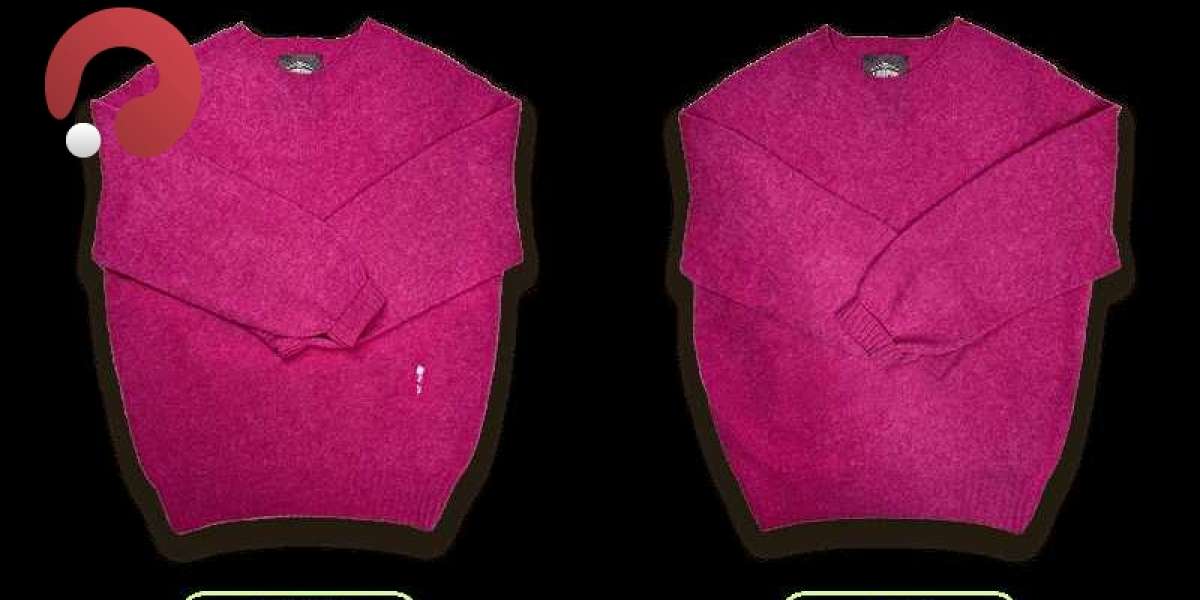Discovering moth holes in your clothes can be frustrating and disheartening. These tiny, unsightly holes can ruin your favorite garments, particularly those made of wool, cashmere, and other natural fibers. Moths are notorious for targeting these materials, leaving behind damage that is often difficult to fix. However, moth holes don’t have to mean the end of your treasured clothing items.
In this article, we’ll explore how moths cause damage to clothes, how to prevent moth infestations, and the best methods for repairing moth holes. By understanding the nature of moth damage and learning the right strategies, you can keep your wardrobe safe and extend the life of your garments.
What Causes Moth Holes in Clothes?
Contrary to popular belief, it’s not adult moths that create the holes in your clothes. The real culprits are the larvae of clothes moths. Two main species of moths are responsible for most clothing damage: the webbing clothes moth (Tineola bisselliella) and the casemaking clothes moth (Tinea pellionella).
Clothes moths are attracted to natural fibers that contain keratin, a protein found in animal fibers like wool, cashmere, silk, fur, and even feathers. The adult moths lay their eggs in dark, undisturbed areas, such as closets, drawers, or boxes where clothes are stored. When the eggs hatch, the larvae feed on the keratin in the fabric, causing small holes.
Moth damage typically appears as:
Small Holes: These are the most common and occur when larvae feed on a specific area of the fabric.
Frayed Edges: Moth larvae can eat along the edges of fabric, leaving frayed or uneven hems and seams.
Bare Patches: Over time, if larvae are left undisturbed, they can cause large bare patches where the fabric has been entirely eaten away.
How to Prevent Moth Holes in Clothes
Prevention is the best way to protect your clothes from moth damage. By taking steps to make your home and storage areas less appealing to moths, you can avoid the hassle of dealing with moth holes altogether.
1. Regularly Clean Your Clothes
Moths are attracted to clothes that have traces of sweat, food particles, or body oils. These organic residues make garments particularly appealing to moth larvae. To minimize the risk of infestation, ensure that you:
- Wash clothes regularly, especially wool and cashmere items that are frequently worn.
- Dry clean delicate items like suits, dresses, and coats that cannot be machine washed.
- Avoid storing dirty clothes, even if they’ve only been worn briefly.
2. Proper Storage Practices
Moth larvae thrive in dark, undisturbed areas. To protect your clothes, store them properly:
Use Airtight Containers: When storing seasonal clothes, pack them in airtight plastic bins or vacuum-sealed bags. This prevents moths from reaching your garments.
Garment Bags: For clothes that need to be hung, use breathable garment bags made of cotton or canvas. Avoid plastic garment bags, as they can trap moisture and damage fabrics.
Cedar and Lavender: Moths dislike the scent of cedar and lavender, making them natural repellents. Use cedar blocks or lavender sachets in your closet and storage spaces. While these won’t kill moths, they can help deter them.
3. Regularly Inspect and Air Out Clothes
Moths tend to infest clothes that remain undisturbed for long periods. Make a habit of airing out and inspecting your clothes:
Rotate Clothes: Rotate your wardrobe periodically, even if you don’t wear certain items often. Shake out sweaters, coats, and other garments to disturb any potential moth larvae.
Vacuum Closets and Drawers: Regularly vacuum closets, drawers, and storage areas to remove dust, lint, and any eggs or larvae that might be hiding. Pay close attention to the corners and edges where moths may hide.
4. Use Moth Traps
Moth traps are an effective way to catch adult moths and monitor for infestations. These traps use pheromones to attract male moths, preventing them from mating. Place traps in closets or storage areas to help reduce the moth population in your home.
How to Repair Moth Holes in Clothes
Even with the best prevention strategies, moth holes can sometimes occur. Fortunately, many moth holes can be repaired, especially if caught early. The method of repair will depend on the size and location of the hole, as well as the type of fabric.
1. Darning
Darning is a traditional method of repairing small holes in fabric by weaving new threads into the damaged area. This technique works well for knitted fabrics like wool sweaters, scarves, and socks.
To darn a moth hole:
- Select a needle and thread that matches the color and thickness of your garment.
- Start by threading the needle and securing the thread at the edge of the hole with a knot.
- Weave the thread back and forth across the hole, creating a patch that fills the damaged area.
- Repeat the process in the opposite direction to form a grid-like structure, mimicking the weave of the fabric.
Darning works best for small to medium-sized holes. For larger holes, other methods may be more effective.
2. Invisible Mending
Invisible mending is an advanced technique often used for high-end garments, such as suits, blazers, or cashmere sweaters. This repair method involves reweaving the fabric so that the repair is nearly undetectable. Invisible mending requires skill and precision, and it’s often best left to professional tailors or fabric repair specialists.
To repair a moth hole using invisible mending:
- A specialist will carefully source threads from hidden areas of the garment (such as inside seams) to match the original fabric.
- The threads are then woven into the hole to recreate the fabric’s original texture and pattern.
- The result is a seamless repair that blends into the surrounding fabric.
While invisible mending can be expensive, it’s worth it for valuable or sentimental garments that you want to restore to their original condition.
3. Patching
For larger moth holes or areas where the fabric has been significantly weakened, patching is a practical solution. This involves sewing a patch of matching fabric over the damaged area.
To patch a moth hole:
- Cut a piece of fabric that matches the color and texture of your garment. If possible, use fabric from an inconspicuous area of the garment (such as an inside pocket or hem) for the best match.
- Sew the patch over the hole using small, even stitches. Make sure the edges of the patch are securely sewn to prevent further fraying.
- Patching can also be done decoratively by using contrasting fabrics or creating shapes, adding a unique flair to your garment.
4. Needle Felting
Needle felting is a repair technique that works particularly well for wool and cashmere garments. It involves using a barbed needle to intertwine loose wool fibers into the fabric, closing the hole.
To needle felt a moth hole:
- Choose wool roving (unspun wool fibers) that matches the color of your garment.
- Place the wool roving over the hole and use the felting needle to push the fibers through the fabric, tangling them with the existing fibers.
- Continue felting until the hole is filled, and the repair blends seamlessly with the rest of the garment.
Needle felting is a quick and easy way to repair small moth holes in wool garments, making it a popular DIY solution.
When to Seek Professional Help
While many moth holes can be repaired at home, some garments may require professional attention. If you have a valuable or sentimental garment that has been significantly damaged by moths, or if you’re unsure of how to repair it yourself, it’s best to seek the help of a professional tailor or fabric repair service. They have the expertise and tools necessary to perform complex repairs, such as invisible mending or reweaving, ensuring that your garment is restored to its original condition.
Conclusion
Moth holes in clothes can be a frustrating problem, but they don’t have to mean the end of your favorite garments. By taking preventative measures to protect your wardrobe and learning how to repair moth holes, you can extend the life of your clothing and reduce the need for replacements. Whether you choose to tackle repairs at home or seek professional help, restoring moth-damaged clothes is a cost-effective and sustainable way to maintain your wardrobe.














